The Platterful Mushroom or Broad Gill (Megacollybia rodmani) is a common long-season mushroom that is hard to miss – it is huge! There’s nothing like finding a platter-sized mushroom waiting to fill your dinner plate! Platterful mushrooms reach up to 8″ wide, grow widely east of the Rocky Mountains, and are edible, but some people have reported issues.
- Scientific Name: Megacollybia rodmani
- Common Names: Platterful mushroom, Broad Gill, Whitelaced Shank, Eastern American Platterful Mushroom
- Habitat: Growing out of decaying wood
- Edibility: Edible, with caution
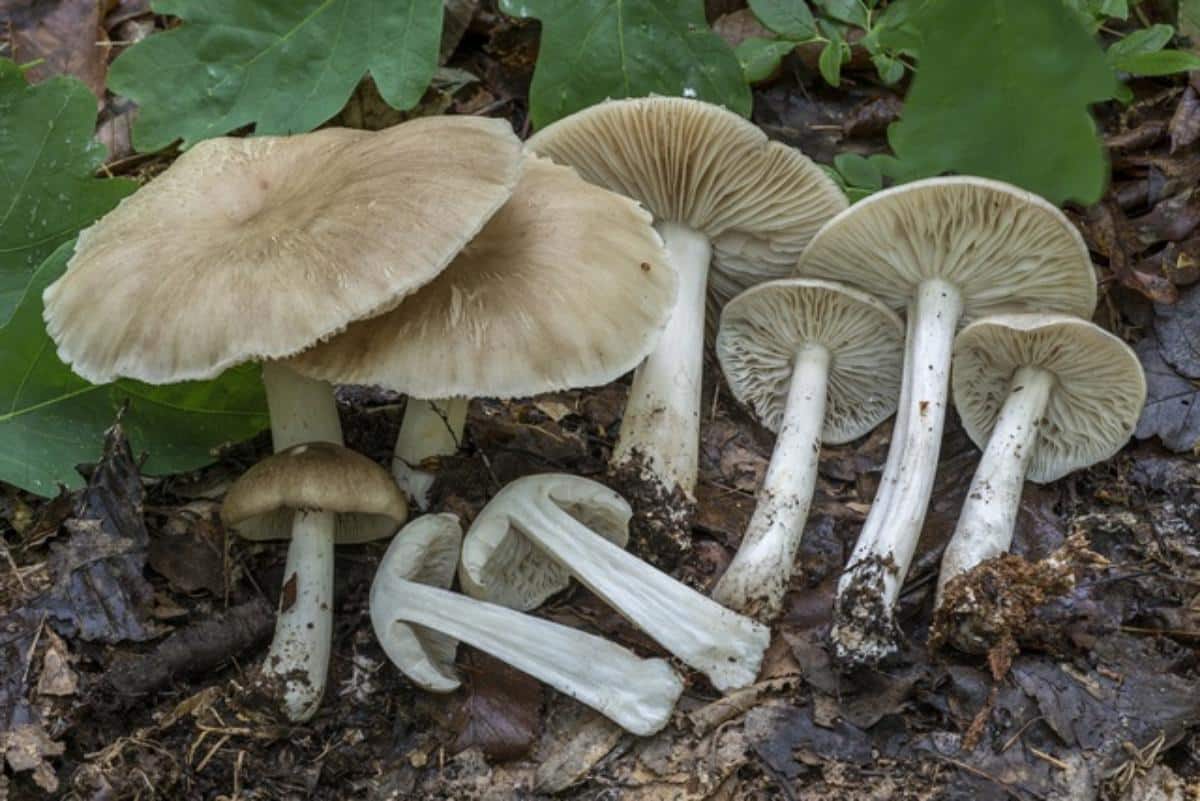
Jump to:
All About The Platterful Mushroom
The platterful mushroom is a medium to large-sized mushroom that is found predominantly in North America, with its presence spanning from the east of the Rocky Mountains to Central America. This mushroom has a unique appearance, featuring a streaked-looking, gray-brown to brown or olive-brown cap and white gills. It is saprobic, meaning it derives its nutrients from decomposing organic matter, particularly deadwood from hardwood trees.
The platterful mushroom’s history is quite interesting, as it was once thought to be a single, worldwide species known as Megacollybia platyphylla. However, a DNA-based study in 2007 revealed that there are actually 8-9 species worldwide, with four species found in North America. This discovery led to a reclassification of the mushroom, distinguishing it as Megacollybia rodmani.
There are two forms of this mushroom: form rodmani and form murina. Form rodmani is taller and more slender, with barely visible or completely absent rhizomorphs (white mycelial strands) at its stem base. Its cap is brown to olive-brown colored. On the other hand, the form murina is stout and gray-brown, with obvious rhizomorphs at the base of the stem.
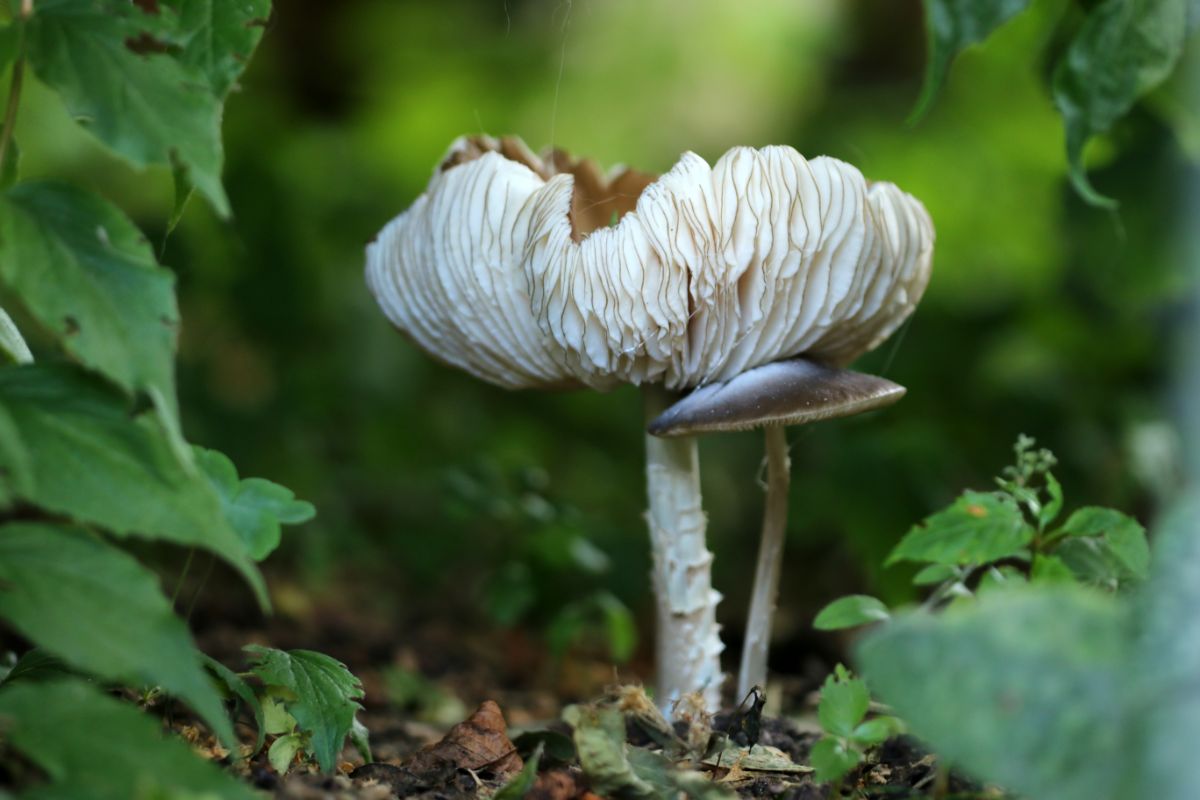
Platterful Mushroom Identification Guide
Season
The ideal season to find this mushroom is from May through October, particularly after rainfall during the warmer months.
Habitat
The Platterful Mushroom is found growing alone or in small groups on rotting hardwood logs or emerging from buried deadwood. It is a saprobic species, meaning it feeds on decomposing organic matter. The platterful is fairly common and widely distributed east of the Rocky Mountains, with its range extending south through Mexico and into Central America.
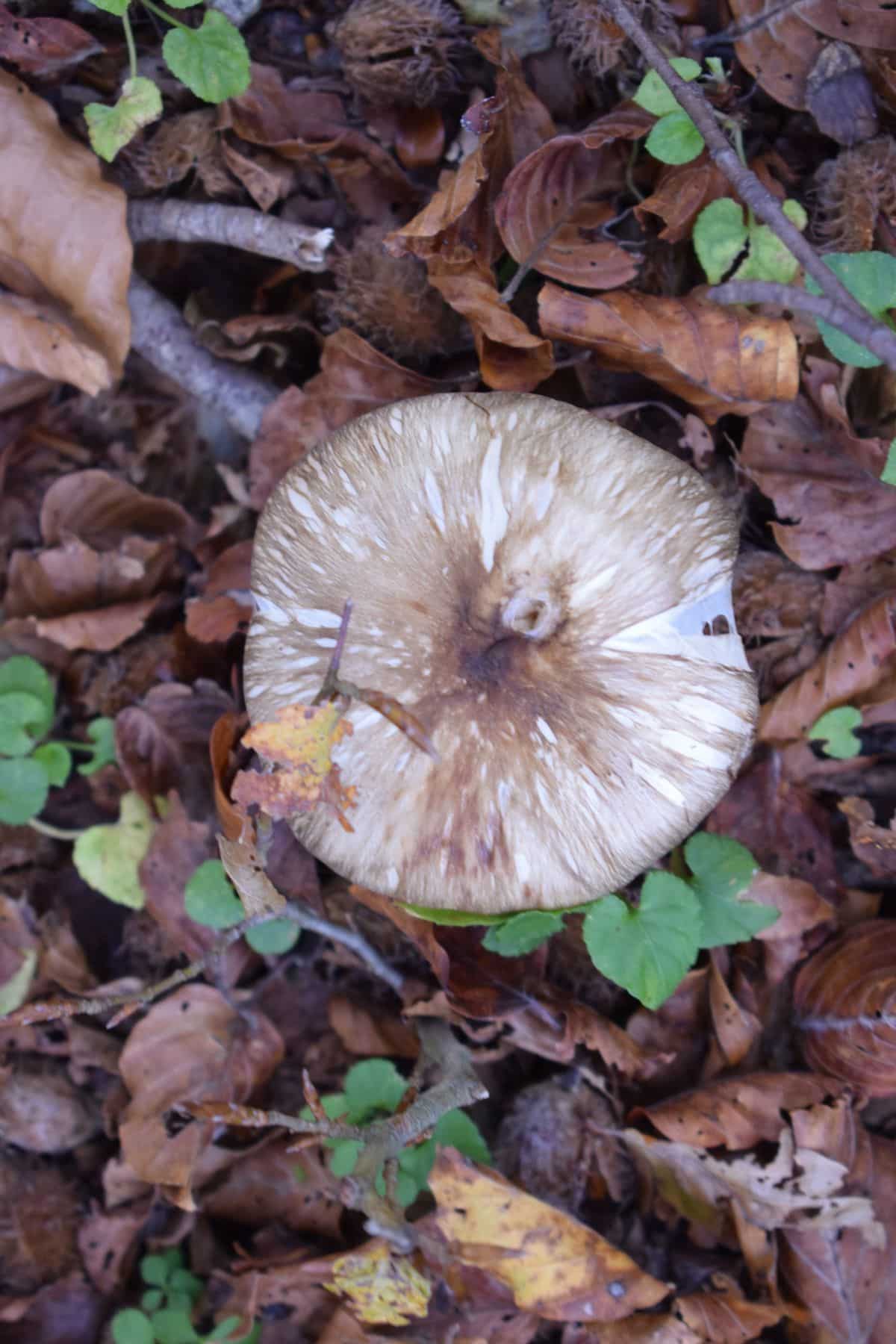
Identification
Cap
The cap is 1- 8 inches wide and starts out bell-shaped. As it matures, it flattens out but usually not completely. It may be shallowly depressed in the center. Cap coloring varies from brown to olive-brown to pale grayish-brown. A primary feature is the radial streaks of darker fibers that cover the cap. With maturity, the cap may crack or split when drying out. The edges may also turn upwards like the mushroom is folding back in on itself.
Gills
The gills are white or cream-colored and broadly or narrowly attached to the stem. They are wide to closely spaced but not super crowded. The edges of the gills are often irregularly wavy to the point they look eroded.
Stem
Platterful mushroom stems range from 2 to 5 inches long and 0.2 to 1 inch wide. The stem is finely silky, whitish, and covered in gray-brown fibrils. The base of the stem is slightly enlarged or tapers towards the base. It may have obvious white rhizomorphs (mycelial fibers) that look like “shoelaces” at the base where it attaches to the ground.
When you bend the stem in half, it doesn’t snap or break cleanly. Instead, it breaks off into many sections that give it the appearance of string cheese strips.
Flesh
The flesh of the platterful mushroom is white and does not change color when cut or bruised.
Taste and Odor
There is no distinctive scent, and the taste is mild.
Spore Print
The spore print is white.
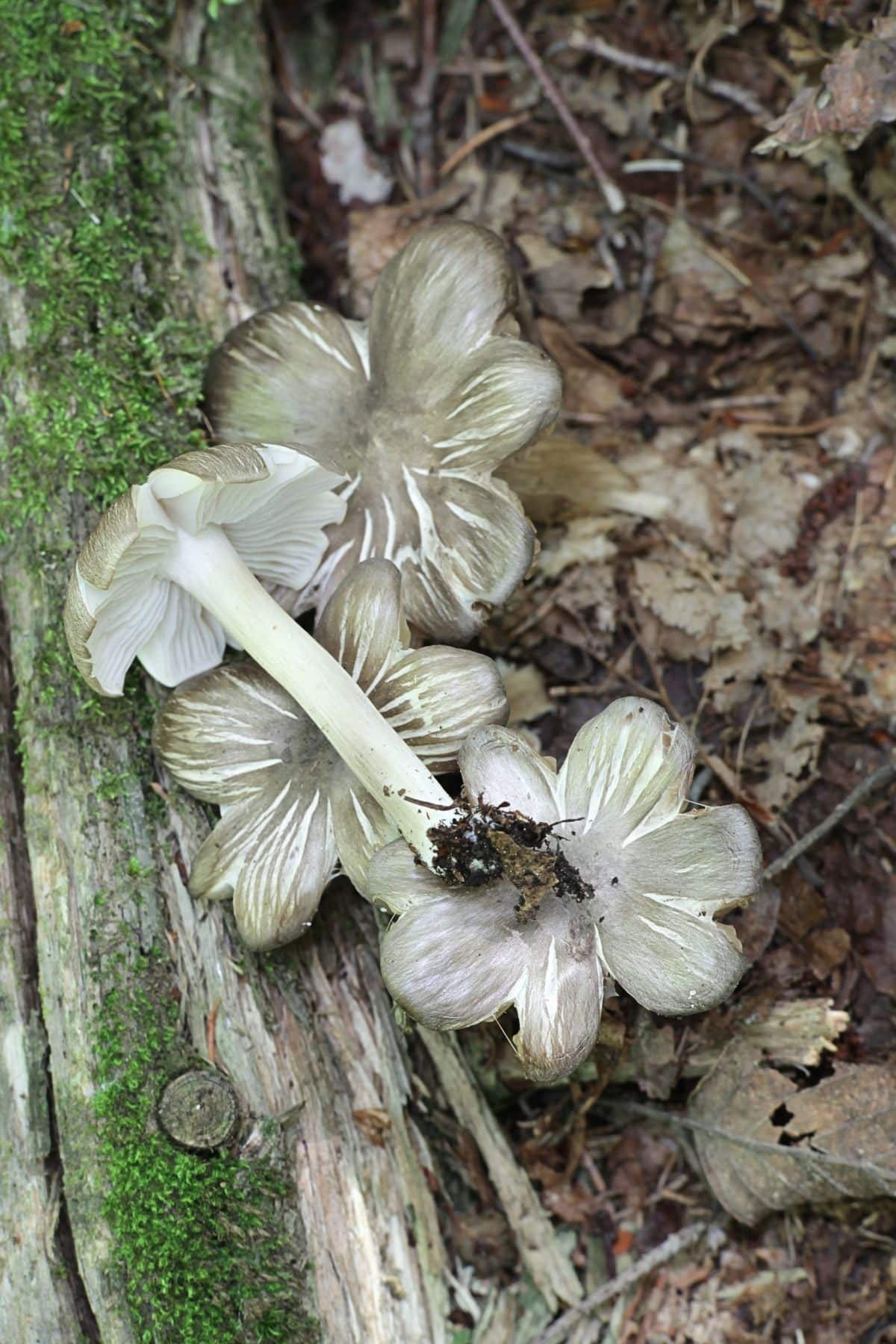
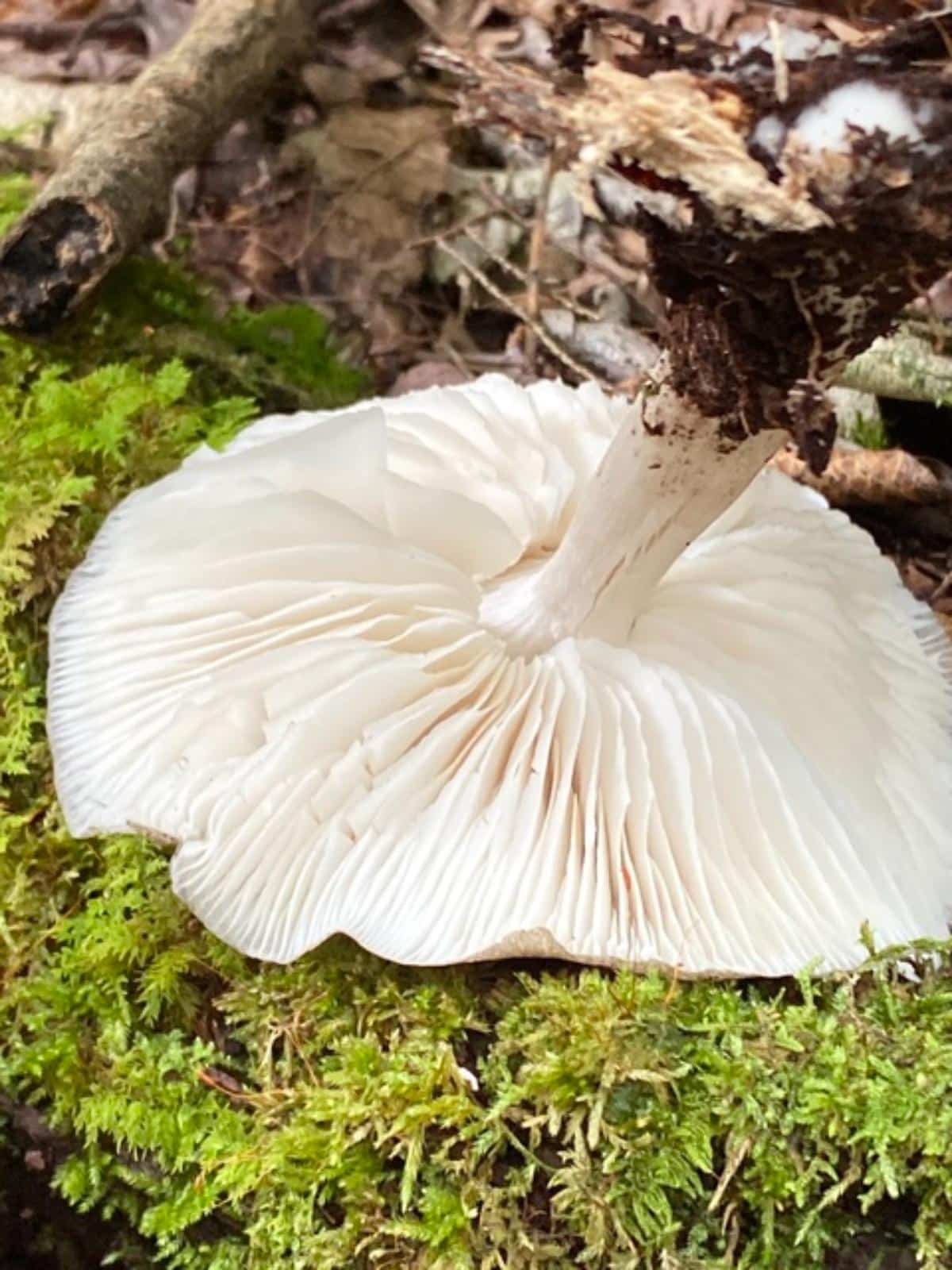
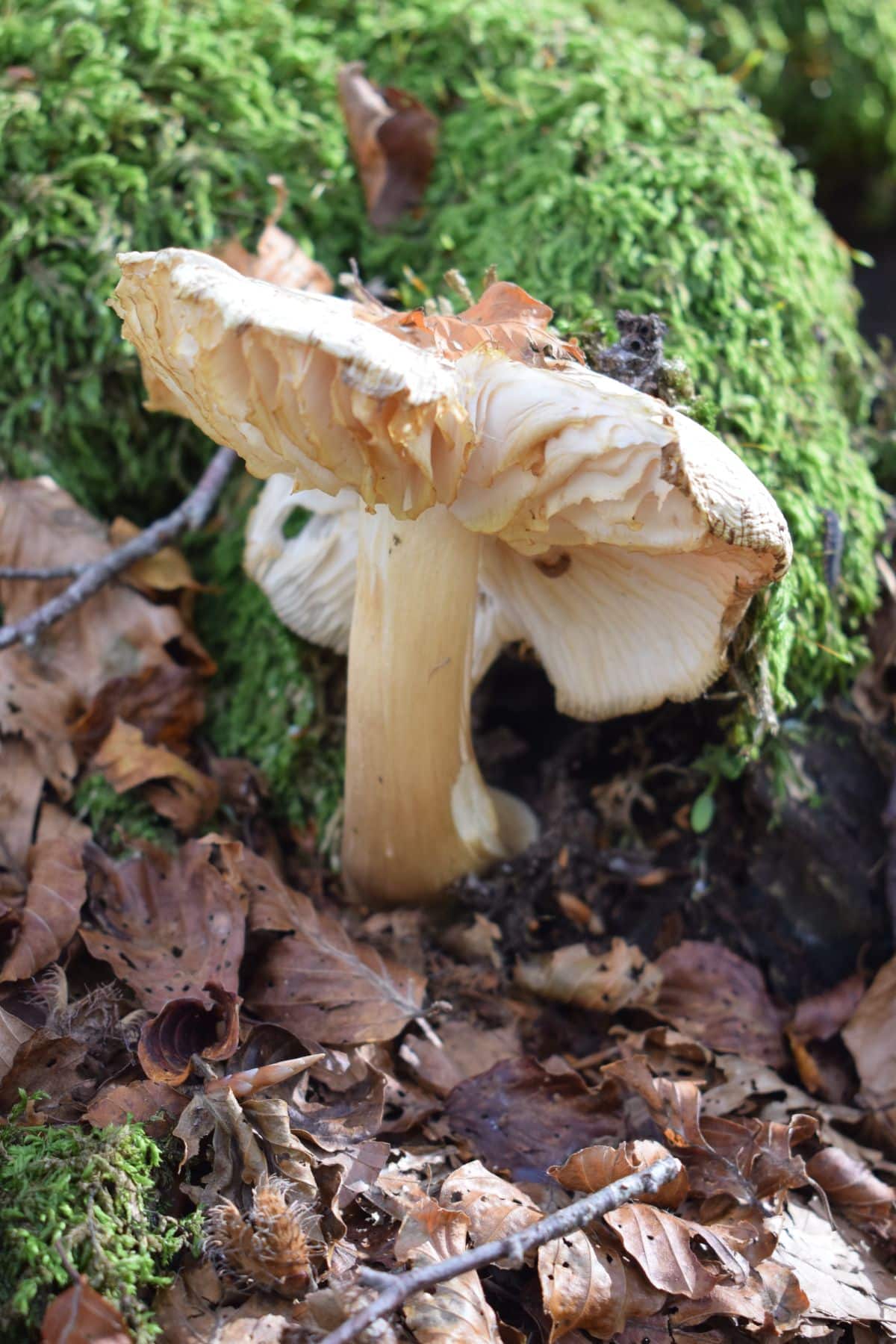
Foraging The Platterful Mushroom
Look for this mushroom on rotting hardwood logs or emerging from buried deadwood. It can be found alone or in small groups and is usually quite distinctive in the woods due to its size. Search during the warmer months, especially after rainfall. It is often one of the first mushrooms to appear after the morel season ends. It loves the rainy days of May and June.
Cut the mushroom off at the base or pluck the entire fruiting body from the ground. Both the cap and stem are edible.
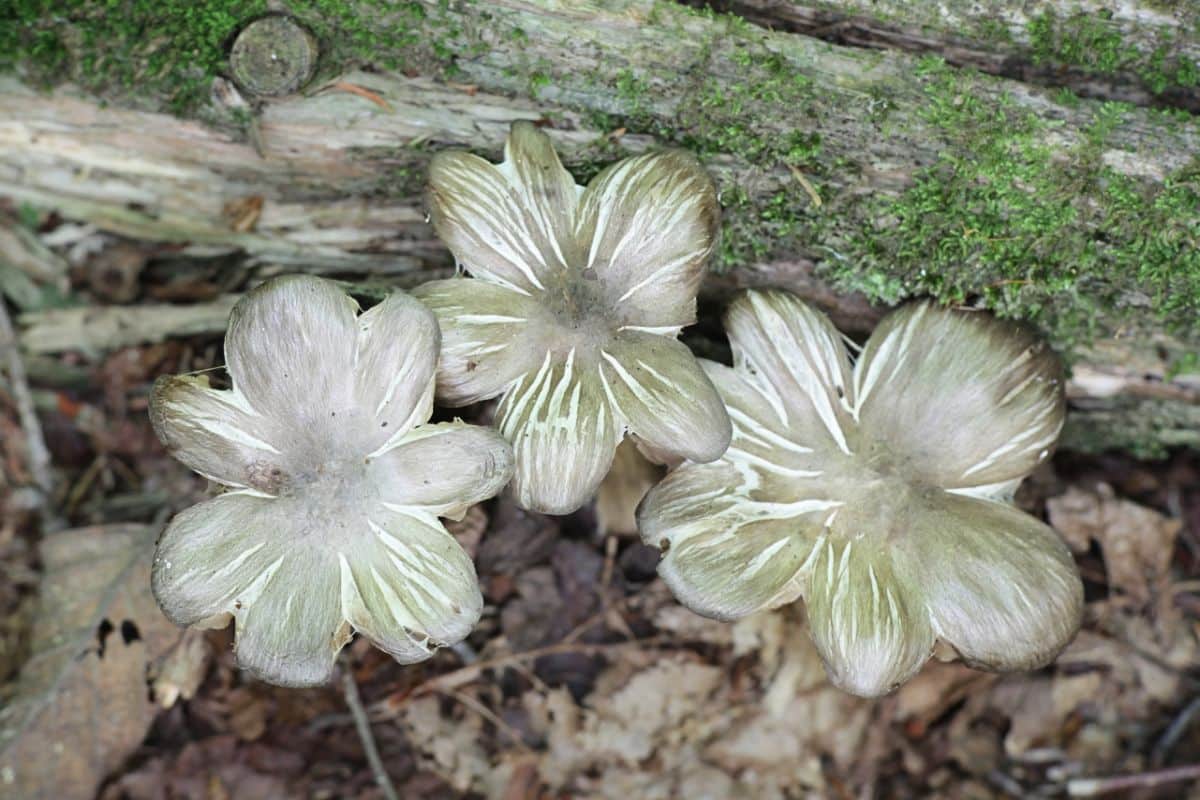
Platterful Mushroom Lookalikes
Spring Cavalier (Melanoleuca cognata)
This large-capped lookalike species grows on soil rather than wood and has warty spores. It also has a more orangy-red tinge to the cap and slight yellowish gills. The gills do start out white before turning yellowish-tan. The spring cavalier smells sweet and mealy or starchy.
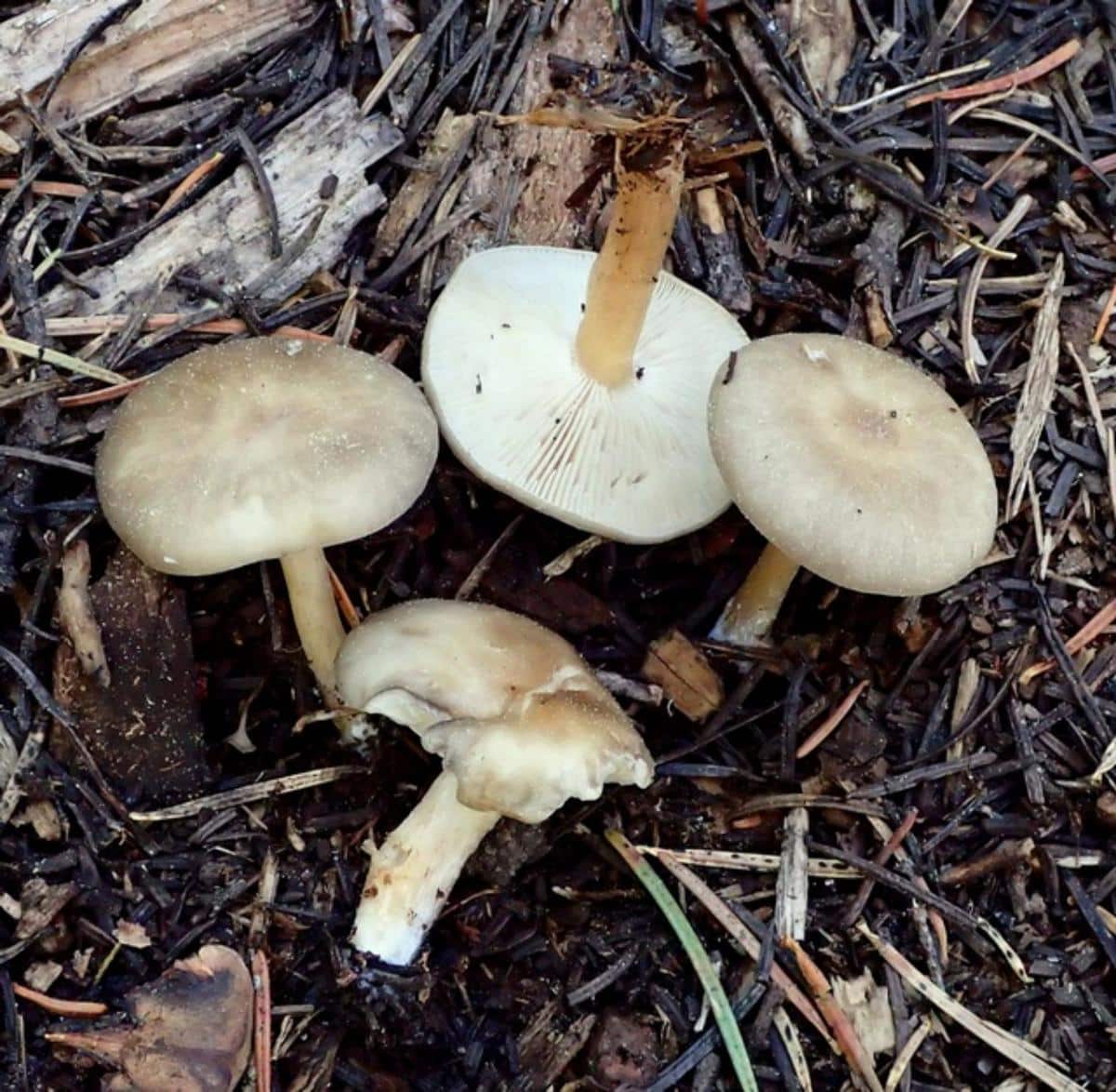
Deer Mushroom (Pluteus cervinus)
The deer mushroom has a gray-brown cap, grows on wood, and appears primarily in spring after rains. It looks almost identical to the platterful mushroom with a few key differences. The deer mushroom is smaller, has closely spaced white gills, and the gills do not touch the stem.
In order to tell these two apart, you must flip them over to inspect the gills. Also, pay attention to how big the specimen gets.
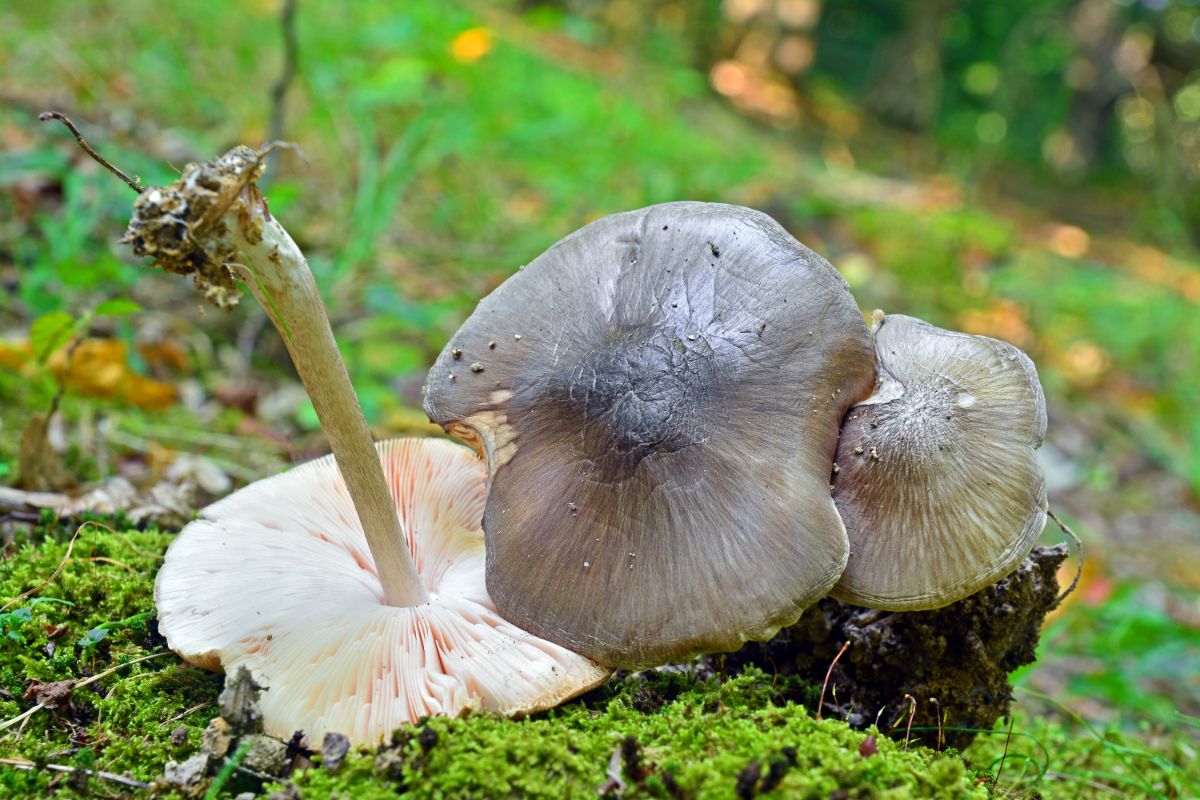
Butter Cap or Greasy Toughshank (Rhodocollybia butyracea)
This species looks somewhat similar to the platterful mushroom only because it grows on decaying wood. It is easy to differentiate, though, with its greasy, reddish-brown cap small size (not getting more than 2.5 inches wide)
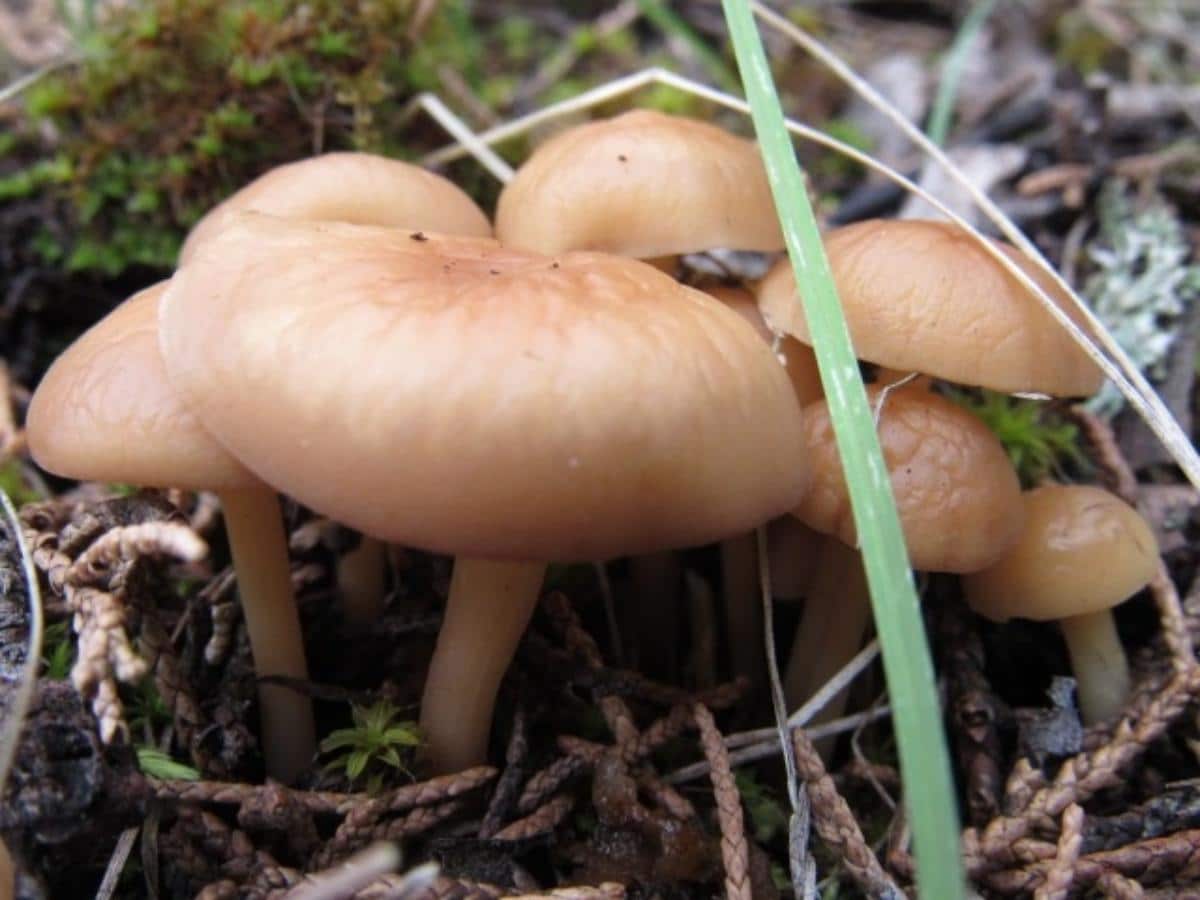
Pluteus americanus
The strong scent of geranium and a cap and stem that usually bruise blue are the two distinguishing differences between this species and the deer mushroom. In all other aspects, they look incredibly similar, with brownish or grayish caps, white gills, and a whitish stem. P. americanus is a psychedelic mushroom, so don’t mistake it for the deer mushroom unless you’re looking for that type of experience! This species occurs east of the Rocky Mountains and in eastern Russia.

Platterful Mushroom Culinary Uses
The platterful mushroom is edible, but caution should be exercised, as some people have reported feeling sick after eating it. If you decide to consume this mushroom, make sure you have accurately identified it and cook it thoroughly before eating. As with any wild mushroom, it is advisable to try a small amount first to ensure you do not have an adverse reaction. A note, though, that any mushroom can cause upset – some people get ill after eating Chicken of the Woods, while most people can eat it just fine (and lots of it!).
Platterful mushrooms have a mild, woodsy flavor that pairs well with many flavors. If you decide to cook and eat Megacollybia rodmani, here are some tips to for a delicious and safe culinary experience:
- Thoroughly clean the mushrooms, removing any dirt or debris.
- Cook the platterfuls well, as undercooked specimens may cause gastrointestinal discomfort.
- Try sautéing the mushrooms in butter or oil, adding garlic, onion, and your favorite herbs for a flavorful dish.
- The platterful mushroom can also be added to soups, stews, or pasta dishes for an earthy, umami flavor.
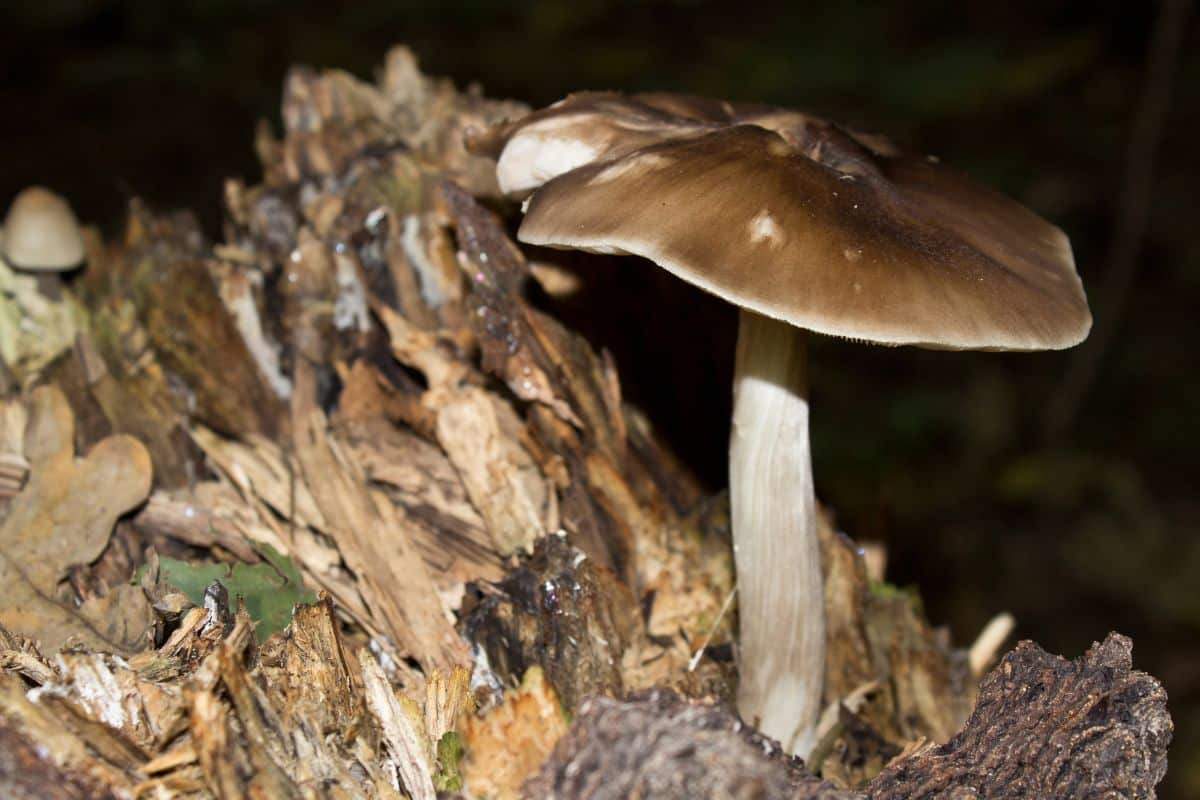
Platterful Mushrooms Common Questions
Can you eat platterful mushroom?
Yes, it is an edible species. Some people have reported in recent years experiencing gastrointestinal distress after eating it, so proceed with caution. That being said, it has been used culinarily for a very long time.

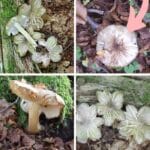
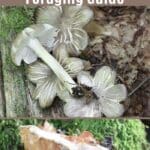
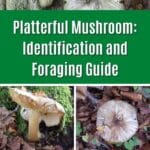


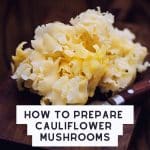
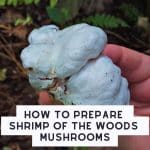
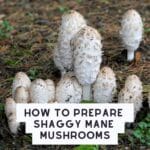
Cynthia Standley says
I think I found a patch of these in Idaho. Can I send you some pictures?
Jenny says
You can post pictures in our facebook group. Make sure to read the pinned/featured post and include all the necessary info https://www.facebook.com/groups/340690111324762
Doug says
do platterful mushrooms have hollow stakes
Jenny says
They’re not exactly totally hollow, they often have some fibrous filling. However, they are definitely not solid like a button mushroom or oyster mushroom. They’re more hollow than solid, for sure